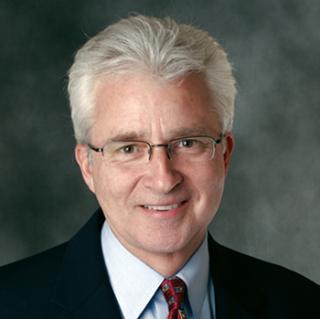Broadening the BaselineBroadening the Baseline
When the editors of BPI asked us at BPSA to put together a content-rich article on single-use issues, we were happy to do so. Our challenge was how to bring in multiple viewpoints about the growing business of single-use that would be a “quick read” for the BPI audience. The answer: an expert colloquy. Represented here are several of the most qualified industry spokespersons in single-use — all are members of BPSA and speak as directors of the alliance. Their message: Single-use adoption is growing.
BPSA has enabled significant educational initiatives responding to many technical concerns with plastic-based systems. And there is still much to be done as the end users of single-use systems begin to assay how to implement these innovative, flexible manufacturing platforms for drug and vaccine production. It’s been said that the transition between old and new is never elegant or seamless. But in the case of single-use, BPSA serves to smooth that transition with help from the experts that populate our alliance, featured below. Enjoy the conversation!
— Kevin Ott, executive director, Bio-Process Systems Alliance
The first part of this discussion is published in BPI’s April 2013 supplement on single-use technology, and you can find it online at www.bioprocessintl.com/journal/supplements. Participants talked about how BPSA is facilitating implementation and educating users as well as encouraging their participation in the organization itself. Next, theydelved deeper into implementation details, technical challenges, and supply chain issues. To get involved yourself, check out the 2013 BPSA International Single-Use Summit in Washington, DC, on 15–17 July 2013 (www.bpsalliance.org/summit.html).

BPSA executive director Kevin Ott ()

BPSA director David Radspinner (Thermo Fisher Scientific) ()
Implementation Continues
Montgomery: Are you still encountering companies that are not convinced that single-use will provide benefits for them?
Radspinner: I think (and it’s been mentioned before) that it’s more about how to implement rather than whether to implement. Some individuals out there still may be hesitant. But I’m finding that most companies are convinced of the value and are moving forward. Now, it’s just a matter of how.
End-users want help in addressing three critical issues: extractables and leachables, particulates, and integrity. They want guidance, and I think that BPSA has done a good job of providing the user community with that guidance.
Stover: Adopting single-use is much easier when new facilities are being planned or constructed — or new compartments, suites, or buildings at an existing site — than when trying to justify replacing legacy stainless steel. Those are still validated and operating. It would probably take an earthquake to destroy an old facility for it to be converted to a different way of manufacturing. But new facilities are being built solely on the idea of single-use.
Martin: Very few new stainless steel facilities are being built today. Probably the only place is in Asia, where they’re looking to just replicate legacy technology for making biosimilars. By contrast, all the new facilities in Europe and the United States are primarily single-use.
Hartzel: We even had brand new stainless steel systems ready for implementing at Catalent’s new facility in Madison, WI. But we chose to sell off those assets and embrace single-use technology to save time and gain flexibility.
Stover: There are facilities going up for which the entire project is planned around single-use, including disposal of the used single-use components and systems that are burned. Those combustibles are recycled into energy for the plant or community.
Raging Incrementalism
Montgomery: Single-use is playing into current discussions of flexible facilities and continuous processing. And I’m seeing it in talks about scaling up cell therapies. Do you see it transforming approaches to other product classes?
Martin: Cell therapy certainly is an area where we will see expansion of single-use to close up systems. It’s also going to pull new technologies into place. Much cell therapy involves contact-dependent cells on beads and other solid phases. The types of bioreactors will be a little different because current single-use bioreactors designed for suspension cells are not optimal for cell therapies. So we will see new types of bioreactors to address concerns of closing up systems and be more optimized for cell therapies.
Montgomery: Do you see other technologies introduced recently that will have a great impact on future use?
Martin: Well, as single-use has moved into final formulation and filling, we are seeing introductions of disposable filling needles, prefabricated filling manifolds, and automated process systems in which single-use filling lines can be implemented.
Radspinner: I think what’s amazing about single-use is that, rather than adding a lot of new technology, it’s about simplification of bioproduction processes. What it’s allowed people to do is actually go backward — in a good way. Where production systems have gotten tremendously complex and overautomated, groups such as contract manufacturers and companies getting into biosimilars can simplify their systems and get to clinical trials much, much faster without a huge investment.

John Stover (NewAge Industries) ()

BPSA chair Jerold Martin (Pall Corporation) ()
Hartzel: Single-use is really more of a manufacturing strategy and a philosophy. As more companies embrace that philosophy, you see where it can be applied. You can look at individual processes and ask, “Where can I cut out cleaning and validation? Where can I remove waste from the process? How can I start to use a brand-new, prevalidated component to replace all of that?” From a lean manufacturing standpoint, that’s where you’re starting to see additional areas for single-use technologies.
Boehm: As technologies such as tubing, connectors, bioreactors, mixers, and so on continue to scale up, the scale of what can be done and the quick transfer of products creates greater flexibility for end-users to make their processes work best — simplifying everything.
Priebe: We haven’t seen in the past year any sort of big, revolutionary introductions. But the gap between multiuse technology and single-use technology is getting narrower and narrower. Now it’s a matter of making things better through incremental improvements, easing implementation, taking care of scale challenges and other issues by identifying gaps between what’s available and what’s needed.
Martin: Yes. We’ve seen many advances in single-use platform ergonomics. That’s where there’s been much development: minimizing the risk of system damage, making processes more robust. A lot of the creative engineering going on in that area doesn’t necessarily appear as new products, but it’s improving the technology.
Montgomery: I see increased focus on automating these processes also.
Ott: We refer to this as “raging incrementalism.” It’s the continuous, steady improvement of systems, processes, and products. It really is evolutionary rather than revolutionary. I think it was revolutionary at one point. Now, it’s a steady continuum of product and system improvements.
We have to remember that this is a very conservative industry, so things don’t move quickly. Everything has to be well thought out and validated. That’s why we’re not necessarily seeing major developments. It’s very much a slow and steady progress to improve the usability of single-use, to minimize some concerns as we move forward.
Montgomery: Yes. As gradual as it is, it’s almost impossible now to have any one issue of this magazine without at least one article talking about how single use implementation has simplified a process or further enabled tech transfer, and so on. Where do you expect this to go from here?
Ott: Well, adoption is still relatively low. A vast majority of drugs are still made in stainless steel. Single-use has only in the past few years moved from clinical-trial materials to approved drugs. So it’s still something new, and what we can expect to see is greater adoption. More new plants will be based on single use. More newly approved drugs will be made in single-use systems. And 10 years from now, most monoclonal antibody (MAb) blockbusters will still be made in large, stainless steel bioreactors. But most of the newer drugs will be made in single-use.

Bill Hartzel (Catalent Pharma Solutions) ()

BPSA first vice-chair John Boehm (Colder Products Company) ()
Stover: As the single-use industry begins to expand, and more suppliers or component manufacturers jump in, the costs of those components and systems will go down. As they do, you’ll attract other industries that face the same headaches of cleaning validation and sterilization as the pharmaceutical companies have.
Food-processing companies, for example, don’t pay the same attention to sterilization and cleaning validation that pharmaceutical companies do, but it’s still an important topic for them. They’re more price-driven, and as the costs come down, they will begin to take a deeper look at single-use. But when you’re processing foods and beverages, you need larger diameters to pass large volumes of material. That’s where the single-use industry needs to evolve and scale up.
Technical Challenges
Montgomery: Let’s delve more into the remaining technical challenges. How about issues of assay development — say, regarding particulates?
Martin: I think the challenges are more about manufacturing control. When single-use was first implemented, it was mostly in upstream and downstream processing for media and buffer preparation. Those steps are typically located upstream of a filter, so the presence of particles was a general manufacturing issue, but it wasn’t a critical quality parameter.
As single-use has moved into aseptically manufactured products (such as vaccines) that do not incorporate final sterilizing filters — and moved into final filling downstream of filters — the concern for particles has become elevated. There’s no serious problem with particles from single-use components, but the concern is over what can be done to minimize the risk from single-use systems — what more might be done? We’re partnering with end users to define what particle levels can be present.
Traditional stainless steel filling systems are cleaned and flushed before use. The desire with single-use is to receive components (already clean) and use them without any flushing. So they will need to have particle controls in place and limits set. What do those controls and limits need to be, how are they put in place, and what sort of quality needs to be designed into these systems? That’s an area of challenge in development now.
Priebe: I would add, that the current USP <788> monograph addresses detection and analysis of subvisible particles, but there’s not really a strong guidance for visible particles. We’re developing a dialogue and making certain that people don’t believe these components must be 100% particle-free because, in fact, the manufacturing processes don’t quite get us to that yet. There’s no monograph that we can lean on right now to agree a
bout and base our expectations on. So that’s an additional challenge. There isn’t a clear path toward analysis and specification setting.
Martin: The methods of assaying for visible and subvisible particles are fairly well established in the US Pharmacopeia. A new standard on examination of visible particles is currently in draft form. USP states that injectable drugs should be essentially free of visible particulates without defining what essentially free means. Many drug manufacturers have established limits for final-dosage containers that they interpret to be “essentially free,” but that’s not zero. So what we are working on with end users and suppliers is this: If we establish particle limits on unfiltered single-use systems, what number of particles can be acceptable as essentially free?
If you set zero as your limit — which some people idealistically would like to see — and then you find one visible particle, that raises questions about clinical implications. The safety risks are perhaps minimal, but what does that mean for a system or production batch, and how do we apply this to quality standards? This is one of the challenges we are working through now.
Ott: We are dedicating two hours on particulates at our single-use summit in July 2013 in Washington DC. We’re organizing a speaker panel to address the many intricacies of particulates in single-use systems to clarify what end users need and what suppliers can provide. Our goal is to find a consensus that considers the suppliers’ capabilities vis-à-vis the needs and wants of end users and regulators. In fact, we have a supplier and end-user committee led by Merck to address this issue.
Supply Chain Issues
Montgomery: What other issues are you focusing on in your upcoming summit? Are there other key initiatives that you’ll be introducing?
Ott: We are planning three technical sessions: one on particulates; one on extractables and leachables; and the third on supply chain, quality, and integrity. It is still a business-oriented meeting, so we plan to have other experts there to talk about the economy, the sequester, the future of Medicare and Medicaid, and the US Food and Drug Administration (FDA), all in context of single-use drug and vaccine manufacturing. They’ll talk about generational workforce issues and have some case studies showing how companies or individuals have implemented single-use factories with design flexibility. We are going to surround the technical topics with some broader-based business concerns because of what’s happening in the broader economy with standardization, standards writing, and workforce or training or generational issues such as how we get and train good workers to run our facilities down the road. Those will all impact our businesses.
It’s not just about using plastics in bioprocessing; it’s about identifying the external drivers that allow us to press for more — or get less, given the problems in Washington, DC, these days. Lots of things come to play, but of course we will also focus exclusively on single-use during our technical break-out sessions.
Montgomery: What information can you provide about supply chain issues, especially in regard to contingency planning?
Priebe: Single-use does create a much greater dependency on the supply base by drug manufacturers than existed in the multiuse world. There were consumables before: most chemicals and media, additives, and filters and cartridges, for example. But now we’re talking about virtually everything that touches the fluid stream being “outsourced” and dependent upon the supply base. I think the first step to exploring this is to create a basis of understanding of the supply chain itself. What does it really looks like? Where are the risks? And where do we need to “derisk” it? Now there’s a lot of focus on the last integrator: the company whose name is on the box. But that may not be where the risk lies. To really derisk the supply chain, you first need to understand it. I think that’s probably the easiest and best first step in which we as an organization can assist by helping users understand what can be done, what shouldn’t or can’t be done, and what should be done to derisk this entire proposition.

Paul Priebe (Sartorius Stedim Biotech) ()

Anne Montgomery (BPI editor in chief) ()
BPSA has recently begun a series of on-site training and supplier showcase events, and this was one of the topics we talked about. It might sound a little bit strange for a supplier to look you in the eye and say, “We’ve really got to think about dual sourcing.” As an industry, we don’t want even one “shot heard ‘round the world” in which we shut down one of our customers. That will create additional obstacles to the growth of single-use technology. So we want to approach this in a very open and mature way, looking to truly derisk this entire proposition so that we don’t have any disasters that create real obstacles down the road.
Montgomery: So are suppliers helping suggest to companies the need for dual sourcing?
Priebe: Dual sourcing may or may not be the answer. It’s more a matter of appropriate derisking of the supply chain. To do that, again, you’ve got to understand it. Dual sourcing is not necessarily the answer because if ultimately there’s one lynchpin that everybody depends on, and you end up specifying the same component from different integrators, then that component becomes your weak link. The term supply chain is entirely appropriate because a chain is only as strong as its weakest link.
Radspinner: Dual sourcing is the simplistic view; it’s really about supply chain assurance and continuity. And it’s about looking at and understanding that supply chain derisking. That could be done through a variety of mechanisms. But dual sourcing in single-use is not as simple as it looks because of the cross-over polymers and various plastics and such. So it’s really looking at the whole supply chain.
Montgomery: I think that needs to be brought out more in conferences too because I haven’t heard that particular point made as clearly as you just made it.
Priebe: The industry already has a very, very strong example in MAb manufacturing with protein A. A lot of risk assessment has been done around supply assurance of protein A. That supply chain is quite dependent on a very few or one prime supplier. No matter how you dual source it, that’s almost exactly what we’
re discussing here. So the industry is trained to look at this already. We just have to put the right people together and get the dialogue going correctly. So David is right: It’s not about dual sourcing; it’s about derisking or supply assurance or business continuity. That’s what we really need to validate.
About the Author
Author Details
BPSA’s key contacts are Kevin Ott, executive director ([email protected]) and Jeanette McCool, senior associate ([email protected]) with the Society of Chemical Manufacturers and Affiliates. S. Anne Montgomery is cofounder and editor in chief ([email protected]) of BioProcess International.
You May Also Like






